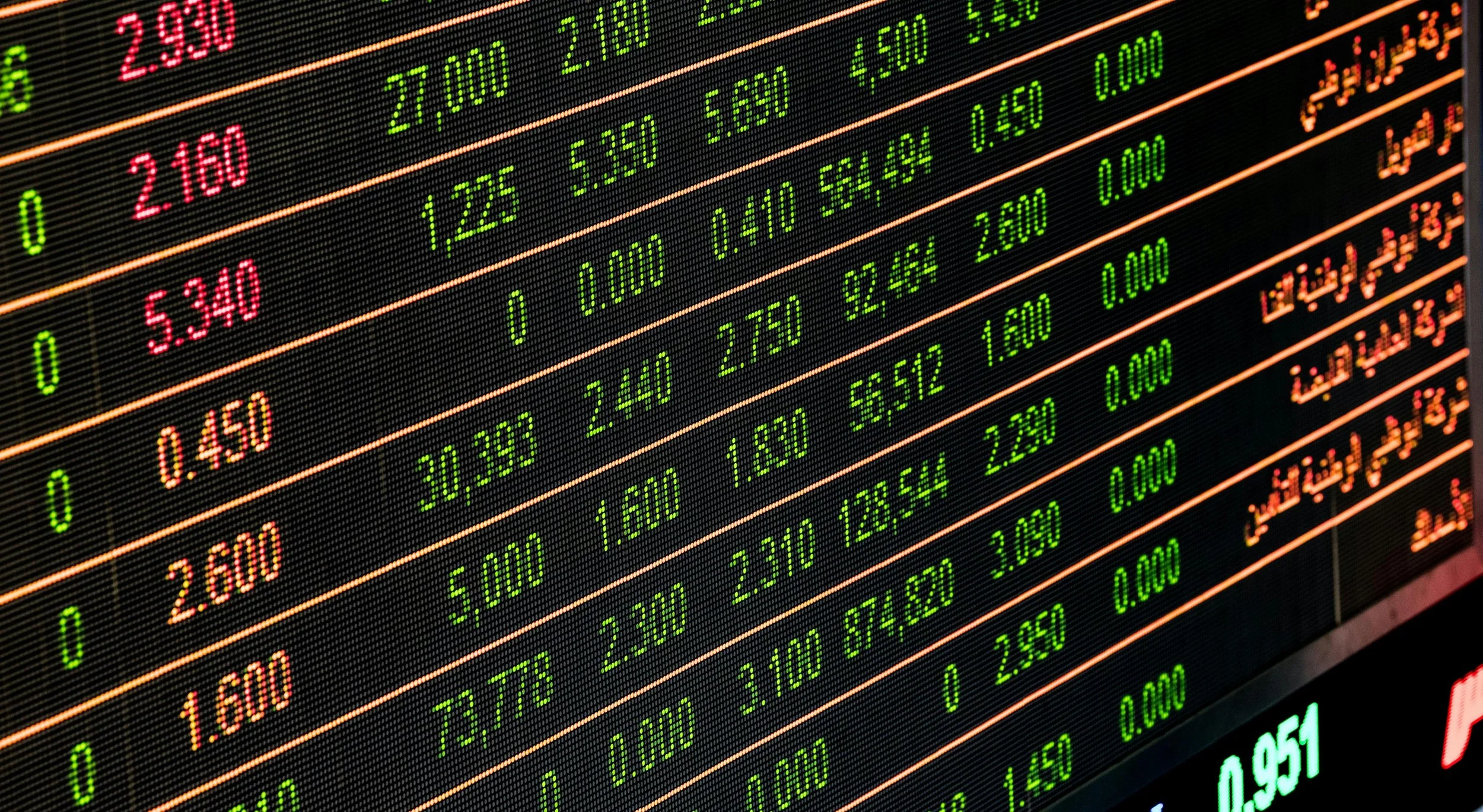Options Trading Terms: Your Comprehensive Reference Glossary
/Trading options requires understanding specialized terminology and concepts. This comprehensive glossary helps you navigate options trading language, from basic definitions to advanced concepts. Whether you're new to options or expanding your knowledge, having a clear grasp of these terms improves your trading decisions.
Key Takeaways
Understanding options terminology is fundamental to trading success
Basic terms provide foundation for more complex concepts
The Greeks help measure different aspects of options pricing
Common acronyms streamline options discussions and analysis
Trading language evolves with market practices
Clear terminology helps improve trading decisions
Introduction to Options Trading Terms
Options trading combines standard investment terminology with specialized language specific to options contracts. This glossary organizes key terms by complexity and usage, helping you build your options vocabulary systematically. Understanding these terms helps you analyze opportunities and communicate effectively with other traders.
Key Terms for Beginners
Start your options journey by mastering these fundamental terms. They form the building blocks of options trading and appear frequently in market discussions and analysis.
At-the-Money: Breakeven; when the underlying asset’s price is equal or very close to the strike price
Call: An option that gives the buyer the right to purchase an underlying asset at a predetermined strike price before expiration
Exercise: The act of using the right to buy or sell the underlying asset as specified in the options contract
Expiration Date: The last date on which the option can be exercised or traded
Gains: Profit made from trading or investing
In-the-Money: Profitable; for call options, when the underlying asset’s price is above the strike price; for put options, when the asset’s price is below the strike price
Options: Contracts that give the holder the right, but not the obligation, to buy or sell a certain amount (typically 100 shares) of an underlying asset at a specified price within a certain time period
Out-of-the-Money: Worthless; for call options, when the underlying asset’s price is below the strike price; for put options, when the asset’s price is above the strike price
Premium: The price paid for purchasing an option, typically quoted on a per-share basis
Put: An option that gives the buyer the right to sell an underlying asset at a predetermined strike price before expiration
Strike Price: The price at which the underlying asset can be bought or sold as specified in the options contract
Underlying Asset: The financial instrument (such as stocks, bonds, commodities, or indices) on which an options contract is based, determining the contract's value
Advanced Terminology for Experienced Traders
As you progress in options trading, these more sophisticated terms become essential for understanding complex strategies and market dynamics.
Bid-Ask Spread: The difference between the highest price a buyer is willing to pay (bid) and the lowest price a seller is willing to accept (ask) for an option
Implied Volatility: A forecast of a likely movement in an asset's price based on the market's expectations
Limit Order: An order to buy or sell an option at a specified price or better
Liquidity: The ease with which an option can be bought or sold in the market without affecting its price
Liquidity Provider: A market participant, often a financial institution or professional trader, that supplies liquidity to the market by placing buy and sell orders
Margin Call: A broker's demand for additional funds when a margin account falls below the required value
Market Capitalization (Market Cap): The total market value of a company's total shares outstanding, calculated by multiplying the share price by total shares available
Market Order: An order to buy or sell an option immediately at the best available price right now
Open Interest: The total number of outstanding options contracts, indicating market activity
Option Chain: A table displaying all available options and metrics for a specific stock
Rally: Sustained increase in the stock market or an individual stock price
Risk-Free Interest Rate: The theoretical rate of return on an investment with zero risk of financial loss, typically represented by government bonds
Short Selling: Borrowing and selling a stock, betting its price will drop so it can be bought back cheaper
Squeeze: Forcing short sellers to buy back shares at higher prices, driving the price even higher
Stop-Loss Order: An order to sell an option when it reaches a certain price to limit potential losses
Take-Profit Order: An order to sell a stock once it reaches a specified price to lock in profits
Time Decay: The loss of value in options as they approach expiration; also known as theta decay
Volatility: A measure of the price fluctuations of the underlying asset
Volume: The number of shares or contracts traded in a security or market during a given period
The Greeks
The Greeks provide mathematical measures of options risk, helping traders understand how different factors affect option prices.
Delta: The rate of change of the option's premium with respect to changes in the underlying stock’s price; it indicates the expected move of an option's price for each $1 change in the asset/stock
Gamma: The rate of change of delta concerning changes in the underlying asset’s price, indicating the stability of delta
Theta: Also known as time decay; the rate at which an option’s price decreases daily as it approaches expiration
Vega: The sensitivity of an option's price to changes in the volatility of the underlying asset; it indicates how much the price of an option is expected to change with a 1% change in volatility
Rho: Is a measure of an option's sensitivity to interest rate changes, indicating how much the option's price is expected to change for a 1% change in the risk-free rate
Commonly Used Acronyms in Options Trading
Options traders frequently use acronyms to communicate efficiently. Understanding these shorthand terms helps you follow market discussions and trading platforms.
ATM: At-the-Money – See definition above
DTE: Days to Expiration – The number of days remaining until the option expires
ETF: Exchange-Traded Fund – An investment fund traded on stock exchanges that holds a diversified portfolio of assets
FOMO: Fear of Missing Out – The anxiety that one might miss out on a profitable opportunity, often leading to impulsive trading decisions
FUD: Fear, Uncertainty, Doubt – Negative information spread to create fear or uncertainty in the market
IPO: Initial Public Offering – The first time a company offers its stock to the public.
ITM: In-the-Money – See definition above
IV: Implied Volatility – See definition above
LEAPS: Long-Term Equity Anticipation Securities – Options with expiration dates that are longer than one year
OI: Open Interest – See definition above
OTM: Out-of-the-Money – See definition above
ROI: Return on Investment – A measure used to evaluate the efficiency of an investment, calculated as the profit or loss relative to the initial investment amount
SPX: S&P 500 Index – A stock market index that measures the stock performance of 500 large companies listed on stock exchanges in the United States, often used as a benchmark for options trading strategies
VIX: CBOE Volatility Index – A popular measure of market expectations of near-term volatility, often referred to as the fear gauge
WSB: Wall Street Bets – A subreddit community known for high-risk trades, irreverent humor, and collective action against institutional investors
YOLO: You Only Live Once – Taking a high-risk trade with a significant portion of capital, often all-in
Trading Lingo and Slang
While maintaining professionalism, it's helpful to understand common market terminology that appears in trading discussions and analysis.
Apes: A self-deprecating term, implying simple and instinctual decision-making
Bagholder: An investor holding onto a losing position, hoping for a rebound
Boomers: Refers to traditional, conservative investors (often stereotypically older) who avoid high-risk trades
Bullish: A market characterized by rising prices and investor optimism
Bearish: A market marked by declining prices and pessimism among investors
Choppy Market: A market with frequent price fluctuations and lack of clear direction
Crash: A rapid and severe drop in the stock market or individual stock price
Crayon Eating: A self-deprecating way of saying investors who make decisions without much thought or analysis
Degenerates (Degens): Refers to traders who take reckless, high-risk trades; worn as a badge of honor in the community
Diamond Hands: Investors who hold onto their assets despite significant market volatility or pressure to sell, demonstrating resolve
Dumpster Fire: A company or stock that’s clearly a bad investment
GME: The market symbol for GameStop, a stock famously involved in a massive short squeeze
Hedgies: Hedge funds or institutional investors, often seen as antagonists to retail traders
HODL: An intentional misspelling of hold, meaning to keep an asset rather than sell it, often associated with long-term investment strategies
Lambo: Short for Lamborghini, symbolizing the ultimate success from trading profits.
Meme Stock: A stock that becomes popular not because of fundamentals but because of online hype (e.g., GME, AMC)
Mooning: When a stock’s price skyrockets, metaphorically heading “to the moon”
Paper Hands: Investors who sell their positions at the first sign of trouble or volatility, lacking conviction
Penny Stock: Low-priced stocks, typically trading below $5, often with high volatility
Rip: A sharp upward price movement
Rocket: A stock with explosive upward momentum; frequently represented with 🚀 emojis
Stonk: A humorous misspelling of "stock" used to describe stocks in general or meme stocks in particular
Tank: A sharp downward price movement
Tendies: Profits or financial gains
Using Your Options Trading Glossary
Building a strong foundation in options terminology improves your trading experience. Start by learning basic terms and gradually incorporate more advanced concepts as you develop your trading strategy. Reference this glossary regularly when analyzing trades or reading market analysis.
Keep in mind that understanding terminology helps you:
Analyze trading opportunities more effectively
Communicate clearly with other traders
Follow market discussions and research
Make more informed trading decisions
Develop advanced trading strategies
Our Options Calculator helps you put these terms into practice, letting you model different scenarios while building your options trading vocabulary. Remember that mastering options terminology is an ongoing process - focus on terms relevant to your current trading approach and expand your knowledge systematically.

















